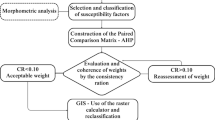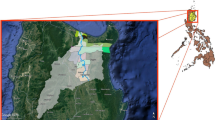Abstract
The trans-boundary scope of the Tumen River Basin (TRB) going through China, Russia and DPRK has been defined, and on the basis of this, status of urbanization and its impacts on water environment in recent 20 years in TRB have been analyzed. Urbanization in TRB can be characterized as: 1) There is medium level of overall urbanization in TRB. Certain distance still exists compared with developed countries. And it is lower than the average urbanization level of Russia and higher than that of China. 2) There is unbalanced distribution of urbanization development in TRB. Urbanization in China part owns the character of low starting point and high-speed development. In Russia part, character of urbanization can be described as high starting point and stable development. In DPRK part, urbanization level is low, and motive power lacks. 3) Due to large population, in China part there is broader region urbanized, larger radius and higher frequency of human activities, which lead to heavier pressure on environment. Meanwhile, the paper has pointed that impacts of urbanization on water environment are as follows: 1) Urban population growth and industry development increase the demand for freshwater, and also exacerbate the contradiction between limited water supply and increasing freshwater demand. 2) Urban infrastructure doesn’t match with urban productive function especially treatment facilities, which results in the pollution of the Tumen River. 3) The pollution situation in the Tumen River got peak point in 1995, and presently, such situation has been improved in great scale, due to effective interventions adopted. However, there still exist 2 enterprises that are urgent to be harnessed. Moreover, pollution of municipal sewage will become more and more apparent. 4) The influence of urbanization on soil is mainly caused by industrial effluent and slag, and polluted water irrigation. Soil and water loss has also been a serious problem caused by urbanization. 5) Urbanization results in the decrease of wetlands area. Furthermore, the paper has given a brief account of the perspective and recommendations on urbanization and environmental impacts.
Similar content being viewed by others
References
CHENG TSO-HSIN, 1987. A Synopsis of the Avifauna of China[M]. Beijing: Science Press, 9–13. (in Chinese)
China Statistics Bureau, 1990–1999. Urban Statistical Yearbook of China[Z]. Beijing: China Statistics Press (in Chinese).
LANG Hui-qing, 1998. Conservation & Research of Wetlands in China[M]. Shanghai: East China Normal University Press, 12–20. (in Chinese)
LI Wei, ZHU Yan-ming, HE Yan, 1997. Research on the Development, Construction Layout and Environmental Control of Resources in Tumen River Area[M]. Beijing: Science Press, 121–140. (in Chinese)
LITVINENKO N M, 1982. On the necessity of the protection of area near the Tumen River mouth as a locality of stopover of cranes[R]. Cranes of the East Asia.
ROSE, P M, D A SCTT, 1994. Waterfowl population estimates[J]. IWRB Publication No. 29. IWRB. Slimbridge, 12–19.
Tumen River Area Development Programme/UNDP, 2000. Economic Map of the Tumen River Economic Development Area (1: 500000)[Z]
UNDP, 2001. TumenNet SAP Project-TDA: National Reports of China & Russia [R].
WANG Shi-jun, 2001. Urbanization and Environmental Effects[R]. TumenNet SAP-Regional Part Report.
YU Fei, 1999. Pollution Abatement of the Tumen River: An Interdisciplinary Approach to the Challenge[R]. Research Report UNDP/Tumen River Area Development Programme.
ZHU Yan-ming et al., 1996. A study on quality of aquatic environment in Tumen River Area[J]. Scientia Geographica Sinica[J], 16(3): 215–223 (in Chinese)
ZHU Yan-ming et al., 1998. Review and prospect of study on environmental geography[J]. Scientia Geographica Sinica, (4):301–310. (in Chinese)
ZHU Zhi-xin, 2001. International Statistical Yearbook(2000)[Z]. Beijing: China Statistics Press.
Author information
Authors and Affiliations
Additional information
Foundation item: Under the auspices of the National Natural Science Foundation of China (No. 49871033) and UNDP/GEF.
Biography: WANG Shi-jun(1963 — ), male, a native of Heilongjiang Province, professor. His research field includes urban and regional geography.
Rights and permissions
About this article
Cite this article
Wang, Sj., Wang, D. & Yang, Xh. Urbanization and its impacts on water environment in tumen river basin. Chin. Geograph.Sc. 12, 273–281 (2002). https://doi.org/10.1007/s11769-002-0014-z
Received:
Issue Date:
DOI: https://doi.org/10.1007/s11769-002-0014-z




